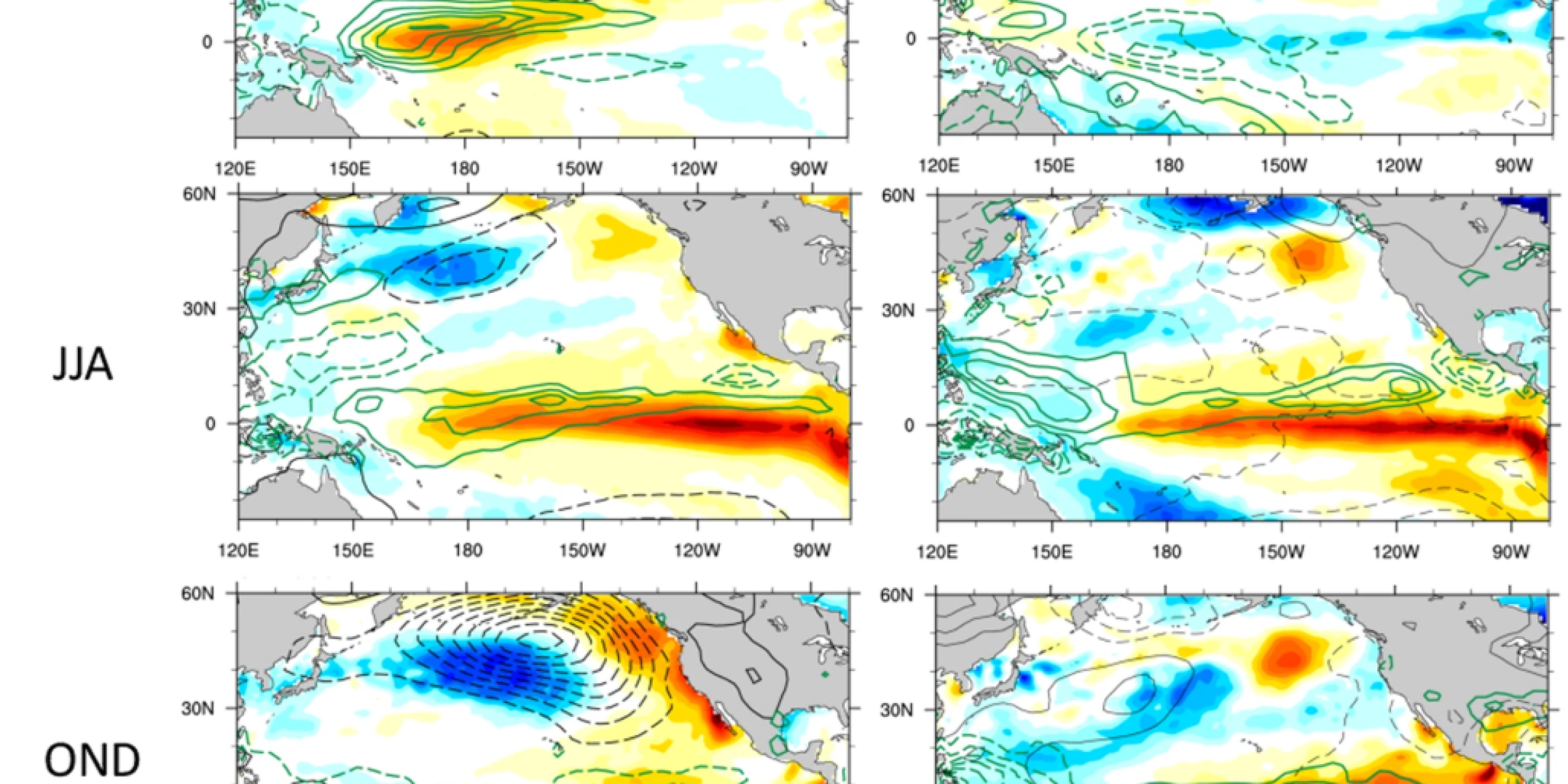Caption: USWC warming vs. no-USWC warming.
During the winter of 2014 and 2015, the US west coast (USWC) experienced record high temperatures extending from Baja California to the Gulf of Alaska. This record warming, as high as 3°C in some areas, greatly impacted the California Current System (CCS) and Gulf of Alaska marine ecosystems. It was suspected that global warming and El Niño played a role in the anomalously warm conditions along the US West Coast. However, tropical Pacific sea surface temperature anomalies were weak during 2014, calling into question their role in the USWC warming period.
In a new Nature Scientific Reports, authors Prashant Sardeshmukh, Aneesh Subramanian, and MAPP-funded PI’s Antonietta Capotondi, Emanuele Di Lorenzo, and Arthur Miller, identified “sensitivity patterns” that create USWC warming at a later time. The study identified sea surface temperatures and sea surface height conditions in the tropical Pacific that are most conducive to large warming anomalies along the USWC. These two precursors, also known as “sensitivity patterns”, do not entirely coincide with ENSO patterns.
The study concludes that even weak tropical SST anomalies, not associated with ENSO, in the right location can significantly influence USWC conditions and improve their predictability. It is noted that future research will be required to examine whether the ‘sensitivity patterns” conditions may become more likely to occur in a warming climate.
———————————————————————————————–
About MAPP
The Modeling, Analysis, Predictions, and Projections (MAPP) Program is a competitive research program in NOAA Research’s Climate Program Office. MAPP’s mission is to enhance the Nation’s and NOAA’s capability to understand, predict, and project variability and long-term changes in Earth’s system and mitigate human and economic impacts. To achieve its mission, MAPP supports foundational research, transition of research to applications, and engagement across other parts of NOAA, among partner agencies, and with the external research community. MAPP plays a crucial role in enabling national preparedness for extreme events like drought and longer-term climate changes. For more information, please visit www.cpo.noaa.gov/MAPP.



